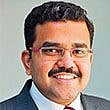Improving FDI not a tall order for India
The country has a plan to become a $5 trillion economy

India is aiming to be a $5 trillion (Dh18.3 trillion) economy by 2024-25, and the country needs to get its mojo back on the Foreign Direct Investment (FDI) front.
The FDI flows into India, Asia’s third largest economy, declined for the first time in six years in 2018-19 by 1 per cent to $44.37 billion from the record of $44.85 billion registered in the previous year.
“FDIs are crucial for a country to progress,” says Dr Azad Moopen, Chairman and Managing Director, Aster DM Healthcare. “Among the four components that lead to GDP growth, investment is one of the crucial aspects that has a direct impact on the economy, while the other three components — consumption, government spends and net imports — are influenced by investments. A catalyst for economic development, investments have the potential to address some of the major challenges that India is facing, such as unemployment and upgrading of core sectors like services, manufacturing, healthcare, power and infrastructure to meet the growing needs of the masses.”
The government has been aggressively in pursuit of attracting more FDI into the country. In the budget that was presented by Finance Minister Nirmala Sitharaman in early July, the federal government opened its doors for foreign investment in various sectors. The government would examine further suggestions to open up FDI in the aviation, media and insurance sectors. The government also plans to permit 10 per cent FDI in insurance intermediaries. “(The) time has come that India not only gets integrated into global value chain of production of goods and services but also becomes part of the global financial system to mobilise global savings, mostly institutionalised in pension, insurance and sovereign wealth funds,” Sitharaman said on the budget day, while easing rules for foreign institutional investors to invest in the country.
India is at an exciting stage of the global growth matrix, with its potential being recognised as a superpower.

Pushing ahead
“India is at an exciting stage of the global growth matrix, with its potential being recognised as a superpower,” says Dr Moopen. To be able to push ahead, FDI into the core sectors will have to be pursued aggressively, which can not only address the immediate needs but also push GDP growth.”
India will have to keep up its GDP of 9 per cent per annum to be able to become a $5 trillion economy in the next five years. However, GDP is expected to slow to 6.9 per cent in the fiscal year to 2020, though there are signs that it might pick up in the second half.
“In addition, the Make in India initiative, which was launched by the Modi government in 2014, had promised to ease the framework for potential investors by simplifying the processes, eliminating the unnecessary laws, regulations and with an aim to make the government processes more transparent and responsive,” says Dr Moopen. “With the Modi government being re-elected, it should boost the investor’s confidence in continuing with their plans.”
At first glance, the 2019 Union Budget lays out a host of policy initiatives seeking to drive investment-led growth — be it easing the rules for FDI inflows, divestment of state-owned enterprises or the call made out by the Finance Minister for public private participation for developmental programmes.

These announcements were part of the budget, which outlined the measures to create a $5 trillion economy in a few years.
“At first glance, the 2019 Union Budget lays out a host of policy initiatives seeking to drive investment-led growth — be it easing the rules for FDI inflows, divestment of state-owned enterprises or the call made out by the Finance Minister for public private participation for developmental programmes,” says Promoth Manghat, Group Chief Executive Officer of Finablr.
The FDIs will create much-needed jobs, wealth distribution and will help meet its objective to become $5 trillion economy.

Infrastructure
India needs to attract $1.5 trillion of FDI — both in debt and equity terms — to fund infrastructure to world-class standards, according to Suresh Kumar, Chairman of the Board of Governors for Indian Business and Professional Council, and founder and mentor of investment company Tricolour Values Investments PSC. “This means both physical and social, and commercial infrastructure across sectors and indeed for its Make in India initiatives,” says Kumar, who expects an FDI of $45 billion next fiscal year. “These FDIs will create much-needed jobs, wealth distribution and will help meet its objective to become $5 trillion economy. India needs both direct FDI into industries and infrastructure as well as indirect in terms of private equity direct investments and private equity funds.”
Tricolour Financial Services has been formed as a Non-Banking Financial Institution with RBI’s regulatory approval to synergistically address in tandem, the financing and investment requirements of social and commercial infrastructure sectors such as such as education, healthcare, affordable housing, waste management, water, agri-processing and SME segments.
In all, a few steps need to be taken to make India the world’s fastest-growing economy.
“With a stable government in place, investors will move ahead with FDI plans,” says Kumar. “Further reforms that will be needed for the ease of starting and doing business needs to be improved."
FDI in healthcare
Aster DM Healthcare has already invested 20 billion Indian rupees (about Dh1 billion) in the healthcare sector in India, and may add more in coming years, says Dr Moopen.
“We want to build hospitals and enter into new areas such as laboratory chains,” he says. “We are already the third largest healthcare company by market capex in India and we are in the process of strengthening our presence in India further looking at the economic development and better prospects for us. India is a growth-oriented market with a huge demand-supply gap in healthcare facilities.”
India’s healthcare sector is expected to reach $280 billion by 2020, and the hospital industry is expected to grow at a annual growth rate of 16-17 per cent to reach $132 billion.
Sign up for the Daily Briefing
Get the latest news and updates straight to your inbox



